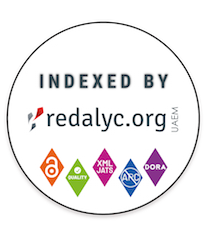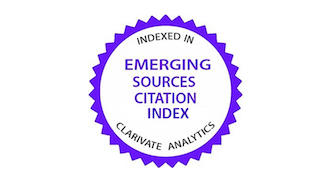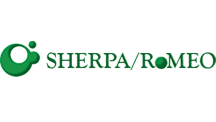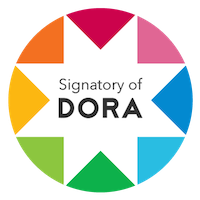Efficiency of botanical extracts from Jatropha curcas L. for the control of Trialeurodes vaporariorum (Hemiptera: Aleyrodidae)
DOI:
https://doi.org/10.15517/am.2025.61233Keywords:
efficacy, median lethal concentration, median lethal time, whiteflyAbstract
Introduction. Trialeurodes vaporariorum (Westwood) is considered one of the main pests affecting horticultural and ornamental crops, especially in greenhouses. Effective management of this pest requires the integration of various methods and techniques, including the use of botanical extracts. Objective. To evaluate the efficacy of botanical extracts derived from Jatropha curcas for the control of Trialeurodes vaporariorum under laboratory conditions. Materials and methods. The study was conducted in the Entomology Laboratory of the Crops Protection Research Center, Universidad de Costa Rica. An adaptation of the methodologies described by Liu and Stansly (1995) and Ibrahim and Mostafa (2018) was implemented to evaluate the efficacy, median lethal concentration (LC50), and median lethal time (LT50) of aqueous botanical extracts made from leaves, stems, and seeds of two J. curcas accessions at concentrations of 50, 100, 150, and 200 g/L on T. vaporariorum. Results. The lowest LC50 (1.52 g/L) and LT50 (61.01 hours) values, as well as the highest efficacy values (above 65 %), were achieved with leaf extracts with significant differences observed exclusively in the LT50 values. Concentration was the most important factor in efficacy estimation according to the Akaike information criterion, and efficacy increased by 0.15 % for each concentration unit. None of the evaluated extracts caused phytotoxicity in Solanum melongena L. plants. Conclusions. The leaf extracts are a promising alternative for the control of T. vaporariorum; however, it is necessary to determine the compounds in Jatropha leaves that induce mortality.
Downloads
References
Abdelgadir, H. A., & Van Staden, J. (2013). Ethnobotany, ethnopharmacology and toxicity of Jatropha curcas L. (Euphorbiaceae): A review. South African Journal of Botany, 88, 204–218. https://doi.org/10.1016/j.sajb.2013.07.021
Aguilar, A., Kass, D., Mora, G., & Hilje, L. (2003). Fagodisuasión de tres extractos vegetales sobre los adultos de Bemisia tabaci. Manejo Integrado de Plagas y Agroecología, 68, 62–70.
Al-Badran, A. A., Fujiwara, M., Gatlin III, D. M., & Mora, M. A. (2018). Lethal and sub-lethal effects of the insecticide fipronil on juvenile brown shrimp Farfantepenaeus aztecus. Scientific Reports, 8(1), Article 10769. https://doi.org/10.1038/s41598-018-29104-3
Alegre, A., Iannacone, J., & Carhuapoma, M. (2017). Toxicidad del extracto acuoso, etanólico y hexánico de Annona muricata, Minthostachys mollis, Lupinus mutabilis, y Chenopodium quinoa sobre Tetranychus urticae y Chrysoperla externa. Chilean Journal of Agricultural & Animal Science, 33(3), 273–284. http://dx.doi.org/10.4067/S0719-38902017005000705
Anderson, P. K., Morales, F. J., Jones, A. L., & Markham, R. H. (2005). Whitefly and whitefly-borne viruses in the tropics: Building a knowledge base for global action. Centro Internacional de Agricultura Tropical.
Arias, G. P., Stashenko, E., & Torres, R. (2007). Biotransformación de terpenos r(+)-limoneno, a-pineno y ?-terpineno por medio de cloroperoxidasa de Caldariomyces fumago. Scientia et Technica, 1(33), 75–78. https://revistas.utp.edu.co/index.php/revistaciencia/article/view/5867
Ateyyat, M. A., Al-Mazra’awi, M., Abu-Rjai, T., & Shatnawi, M. A. (2009). Aqueous extracts of some medicinal plants are as toxic as Imidacloprid to the sweet potato whitefly, Bemisia tabaci. Journal of Insect Science, 9(1), Article 15. https://doi.org/10.1673/031.009.1501
Bagnarello, G., Hilje, L., Bagnarello, V., Cartín, V., & Calvo, M. (2009). Actividad fagodisuasiva de las plantas Tithonia diversifolia y Montanoa hibiscifolia (Asteraceae) sobre adultos del insecto plaga Bemisia tabaci (Homoptera: Aleyrodidae). Revista de Biología Tropical, 57(4), 1201–1215. https://doi.org/10.15517/rbt.v57i4.5457
Bullangpoti, V., Wajnberg, E., Audant, P., & Feyereisen, R. (2012). Antifeedant activity of Jatropha gossypifolia and Melia azedarach senescent leaf extracts on Spodoptera frugiperda (Lepidoptera: Noctuidae) and their potential use as synergists. Pest Management Science, 68(9), 1255–1264. https://doi.org/10.1002/ps.3291
Caballero, R. (1996). Identificación de moscas blancas. En L. Hilje (Ed.), Metodologías para el estudio y manejo de moscas blancas y Geminivirus (pp. 1–10). Centro Agronómico Tropical de Investigación y Enseñanza, Unidad de Fitoprotección.
Calcagno, V. (2020). glmulti: Model selection and multimodel inference made easy. (R package version 1.0.8.). R Foundation for Statistical Computing. https://CRAN.R-project.org/package=glmulti
Chan, C., Chan, G., Leeper, T., & Becker, J. (2018). rio: A Swiss-army knife for data I/O. (R package version 0.5.16.). R Foundation for Statistical Computing. https://cran.r-project.org/package=rio
Cruz-Estrada, A., Gamboa-Angulo, M., Bórges-Argáez, R., & Ruiz-Sanchez, E. (2013). Insecticidal effects of plant extracts on immature whitefly Bemisia tabaci Genn. (Hemiptera: Aleyroideae). Electronic Journal of Biotechnology, 16(1), 1–9. https://doi.org/10.2225/vol16-issue1-fulltext-6
Da Silva, L. C., de Carvalho, T. C., Pereira, I., Marana, J. C., Laviola, B. G., Abdelnur, P. V., & Vaz, B. G. (2019). Molecularly imprinted polymer-coated probe electrospray ionization mass spectrometry determines phorbol esters and deoxyphorbol metabolites in Jatropha curcas leaves. Journal of the American Society for Mass Spectrometry, 30(10), 2051–2059. https://doi.org/10.1007/s13361-019-02269-5
Devappa, R. K., Makkar, H. P. S., & Becker, K. (2010). Jatropha toxicity—A review. Journal of Toxicology and Environmental Health, Part B, 13(6), 476–507. https://doi.org/10.1080/10937404.2010.499736
Devappa, R. K., Makkar, H. P. S., & Becker, K. (2012). Localisation of antinutrients and qualitative identification of toxic components in Jatropha curcas seed. Journal of the Science of Food and Agriculture, 92(7), 1519–1525. https://doi.org/10.1002/jsfa.4736
Devappa, R. K., Rajesh, S. K., Kumar, V., Makkar, H. P. S., & Becker, K. (2012). Activities of Jatropha curcas phorbol esters in various bioassays. Ecotoxicology and Environmental Safety, 78, 57–62. https://doi.org/10.1016/j.ecoenv.2011.11.002
Diabaté, D., Gnago, J. A., Koffi, K., & Tano, Y. (2014). The effect of pesticides and aqueous extracts of Azadirachta indica (A. Juss) and Jatropha carcus L. on Bemisia tabaci (Gennadius) (Homoptera: Aleyrodidae) and Helicoverpa armigera (Hübner) (Lepidoptera: Noctuidae) found on tomato plants in Côte d’Ivoire. Journal of Applied Biosciences, 80(1), 7132–7143. https://doi.org/10.4314/jab.v80i1.14
Escobar Villacres, D. A. (2015). Efecto insecticida de ésteres de forbol de la semilla de piñón (Jatropha curcas) para el control de mosca blanca (Bemisia tabaci) en tomate (Solanum lycopersicum) [Tesis de licenciatura, Escuela Agrícola Panamericana]. Biblioteca Digital de la Escuela Agrícola Panamericana. https://bdigital.zamorano.edu/handle/11036/4580
Eziah, V. (1999). Evaluation of Jatropha curcas L. (Euphorbiaceae) as a biopesticide in the control of insect pests complex of aubergine (Solanum melongena L.) [Doctoral thesis, University of Ghana]. University of Ghana Digital Collections (UGSpace). https://ugspace.ug.edu.gh/handle/123456789/7938
Flores, G., Hilje, L., Mora, G., & Carballo, M. (2008). Antifeedant activity of botanical crude extracts and their fractions on Bemisia tabaci (Homoptera: Aleyrodidae) adults: I. Gliricidia sepium (Fabaceae). Revista de Biología Tropical, 56(4), 2099–20113. https://doi.org/10.15517/rbt.v56i4.5782
Gorman, K., Devine, G., Bennison, J., Coussons, P., Punchard, N., & Denholm, I. (2007). Report of resistance to the neonicotinoid insecticide imidacloprid in Trialeurodes vaporariorum (Hemiptera: Aleyrodidae). Pest Management Science, 63(6), 555–558. https://doi.org/10.1002/ps.1364
Greathead, A. H. (1986). Host plants. In M. Cock (Ed.), Bemisia tabaci: A literature survey on the cotton whitefly with an annotated bibliography (pp. 17–25). International Institute of Biological Control.
Hilje, L. (2001). Avances hacia el manejo sostenible del complejo mosca blanca-geminivirus en tomate, en Costa Rica. Manejo Integrado de Plagas, 61, 69–80. https://repositorio.catie.ac.cr/handle/11554/5817
Hilje, L. (2005). Cómo determinar la repelencia de sustancias aleloquímicas sobre las moscas blancas. Manejo Integrado de Plagas y Agroecología, 74, 94–98. https://repositorio.catie.ac.cr/handle/11554/5908
Hilje, L., & Morales, F. J. (2008). Whitefly bioecology and management in Latin America. In J. L. Capineira (Ed.), Encyclopedia of Entomology (4250–4260). Springer. https://doi.org/10.1007/978-1-4020-6359-6_2669
Hlina, B. L., Birceanu, O., Robinson, C. S., Dhiyebi, H., & Wilkie, M. P. (2021). The relationship between thermal physiology and lampricide sensitivity in larval sea lamprey (Petromyzon marinus). Journal of Great Lakes Research, 47(Suppl. 1), S272–S284. https://doi.org/10.1016/j.jglr.2021.10.002
Ibrahim, H., & Mostafa, M. (2018). Efficacy of some plant essential oils as green insecticides to control whitefly, Bemisia tabaci (Gennadius). International Journal of Entomology and Nematology, 4(2), 85–92.
Ingle, K. P., Deshmukh, A. G., Padole, D. A., Mahendra, S. D., Moharil, M. P., & Khelurkar, V. C. (2017a). Bioefficacy of crude extracts from Jatropha curcas against Spodoptera litura. Journal of Entomology and Zoology Studies, 5(1), 36–38. https://www.entomoljournal.com/archives/?year=2017&vol=5&issue=1&ArticleId=1439
Ingle, K. P., Deshmukh, A. G., Padole, D. A., Mahendra, S. D., Moharil, M. P., & Khelurkar, V. C. (2017b). Screening of insecticidal activity of Jatropha Curcas (L.) against diamond back moth and Helicoverpa Armigera. Journal of Entomology and Zoology Studies, 5(1), 44–50. https://www.entomoljournal.com/archives/?year=2017&vol=5&issue=1&ArticleId=1441
Ivase, T., Nyakuma, B., Otitolaye, V., Utume, L., Ayoosu, M., Jagun, Z., Oladokun, O., & Dodo, Y. (2021). Standardization, quality control, and bio-enhancement of botanical insecticides: a review. Journal of Environment, Agriculture, and Energy, 2(2), 104–111. https://doi.org/10.37281/DRCSF/2.2.2
Jing, Y. P., An, H., Zhang, S., Wang, N., & Zhou, S. (2018). Protein kinase C mediates juvenile hormone–dependent phosphorylation of Na+/K+-ATPase to induce ovarian follicular patency for yolk protein uptake. Journal of Biological Chemistry, 293(52), 20112–20122. https://doi.org/10.1074/jbc.RA118.005692
Jones, D. R. (2003). Plant viruses transmitted by whiteflies. European Journal of Plant Pathology, 109, 195–219. https://doi.org/10.1023/A:1022846630513
Khattak, A., Ullah, F., Wazir, S. M., & Shinwari, Z. K. (2015). Allelopathic potential of jatropha curcas L. leaf aqueous extracts on seedling growth of wheat. Pakistan Journal of Botany, 47(6), 2449–2454.
Liu, T.-X., & Stansly, P. A. (1995). Toxicity of biorational insecticides to Bemisia argentifolii (Homoptera: Aleyrodidae) on tomato leaves. Journal of Economic Entomology, 88(3), 564–568. https://doi.org/10.1093/jee/88.3.564
Moiteiro, C., Marcelo Curto, M. J., Mohamed, N., Bailén, M., Martínez-Díaz, R., & González-Coloma, A. (2006). Biovalorization of friedelane triterpenes derived from cork processing industry byproducts. Journal of Agricultural and Food Chemistry, 54(10), 3566–3571. https://doi.org/10.1021/jf0531151
Navarrete, J. B., Valarezo, O., Cañarte, E., & Solórzano, R. (2016). Efecto del nim (Azadirachta indica Juss.) sobre Bemisia tabaci Gennadius (Hemiptera: Aleyrodidae) y controladores biológicos en el cultivo del melón Cucumis melo L. La Granja, 25(1), 33–44. https://doi.org/10.17163/lgr.n25.2017.03
Novak, W. K., & Haslberger, A. G. (2000). Substantial equivalence of antinutrients and inherent plant toxins in genetically modified novel foods. Food and Chemical Toxicology, 38(6), 473–483. https://doi.org/10.1016/S0278-6915(00)00040-5
Piepenbring, M. (2015). Introducción a la micología en los Trópicos. American Phytopathological Society. https://doi.org/10.1094/9780890546147
Ratnadass, A., & Wink, M. (2012). The phorbol ester fraction from Jatropha curcas seed oil: potential and limits for crop protection against insect pests. International Journal of Molecular Sciences, 13(12), 16157–16171. https://doi.org/10.3390/ijms131216157
R Core Team. (2020). R: A language and environment for statistical computing. R Foundation for Statistical Computing. https://www.R-project.org/
Reichel, T., Barazetti, J. F., Stefanello, S., Paulert, R., & Zonetti, P. (2013). Allelopathy of leaf extracts of jatropha (Jatropha curcas L.) in the initial development of wheat (Triticum aestivum L.). Idesia, 31(1), 45–52. https://revistas.uta.cl/pdf/773/art06.pdf
Rincón, D. F., Vasquez, D. F., Rivera-Trujillo, H. F., Beltrán, C., & Borrero-Echeverry, F. (2019). Economic injury levels for the potato yellow vein disease and its vector, Trialeurodes vaporariorum (Hemiptera: Aleyrodidae), affecting potato crops in the Andes. Crop Protection, 119, 52–58. https://doi.org/10.1016/j.cropro.2019.01.002
Rodríguez-Montero, L., Berrocal-Jiménez, A., Campos-Rodríguez, R., & Madriz-Martínez, M. (2020). Determinación de la actividad biocida de extractos vegetales para el combate de la mosca blanca Bemisia tabaci (Hemíptera: Aleyrodidae). Revista Tecnología en Marcha, 33(3), 117–129. https://doi.org/10.18845/tm.v33i3.4373
Simmons, A. M., & Riley, D. G. (2021). Improving whitefly management. Insects, 12(5), Article 470. https://doi.org/10.3390/insects12050470
Tomar, N. S., Sharma, M., & Agarwal, R. M. (2015). Phytochemical analysis of Jatropha curcas L. during different seasons and developmental stages and seedling growth of wheat (Triticum aestivum L) as affected by extracts/leachates of Jatropha curcas L. Physiology and Molecular Biology of Plants, 21(1), 83–92. https://doi.org/10.1007/s12298-014-0272-0
United States Environmental Protection Agency. (2012). Ecological effects test guidelines. OCSPP 850.2000: Background and special considerations- tests with terrestrial wildlife. Office of Chemical Safety and Pollution Prevention. https://nepis.epa.gov/Exe/ZyPURL.cgi?Dockey=P100IRIT.txt
Valdez-Ramirez, A., Flores-Macias, A., Figueroa-Brito, R., De la Torre-Hernandez, M. E., Ramos-Lopez, M. A., Beltran-Ontiveros, S. A., Becerril-Camacho, D. M., & Diaz, D. (2023). A systematic review of the bioactivity of Jatropha curcas L. (Euphorbiaceae) extracts in the control of insect pests. Sustainability, 15(15), Article 11637. https://doi.org/10.3390/su151511637
Vega Quirós, N. J. (2018). Caracterización molecular y bioquímica de tres accesiones de Jatropha curcas L. (tempate) del Banco de Germoplasma de la Estación Experimental Fabio Baudrit Moreno [Tesis de licenciatura, no publicada, Instituto Tecnológico de Costa Rica].
Venables, W. N., & Ripley, B. D. (2002). Modern applied statistics with S (4th ed.). Springer. https://doi.org/10.1007/978-0-387-21706-2
Vinasco, N., Salazar, E., Soto, A., Mejía, L. F., & Dussan, C. (2015). Efecto de Jatropha urens (Euphorbiaceae) y Lantana camara (Verbenaceae) sobre Trialeurodes vaporariorum (Hemiptera: Aleyrodidae). Revista de Ciencias Agrícolas, 32(1), 55–64. https://doi.org/10.22267/rcia.153201.24
Wisler, G. C., Duffus, J. E., Liu, H.-Y., & Li, R. H. (1998). Ecology and epidemiology of whitefly-transmitted closteroviruses. Plant Disease, 82(3), 270–280. https://doi.org/10.1094/PDIS.1998.82.3.270
Yang, M., & Lin, K. (2017). Isolation of insecticidal components in Inula salsoloides Ostenf. And characterisation of their activities. Natural Product Research, 31(17), 2049–2052. https://doi.org/10.1080/14786419.2016.1269092
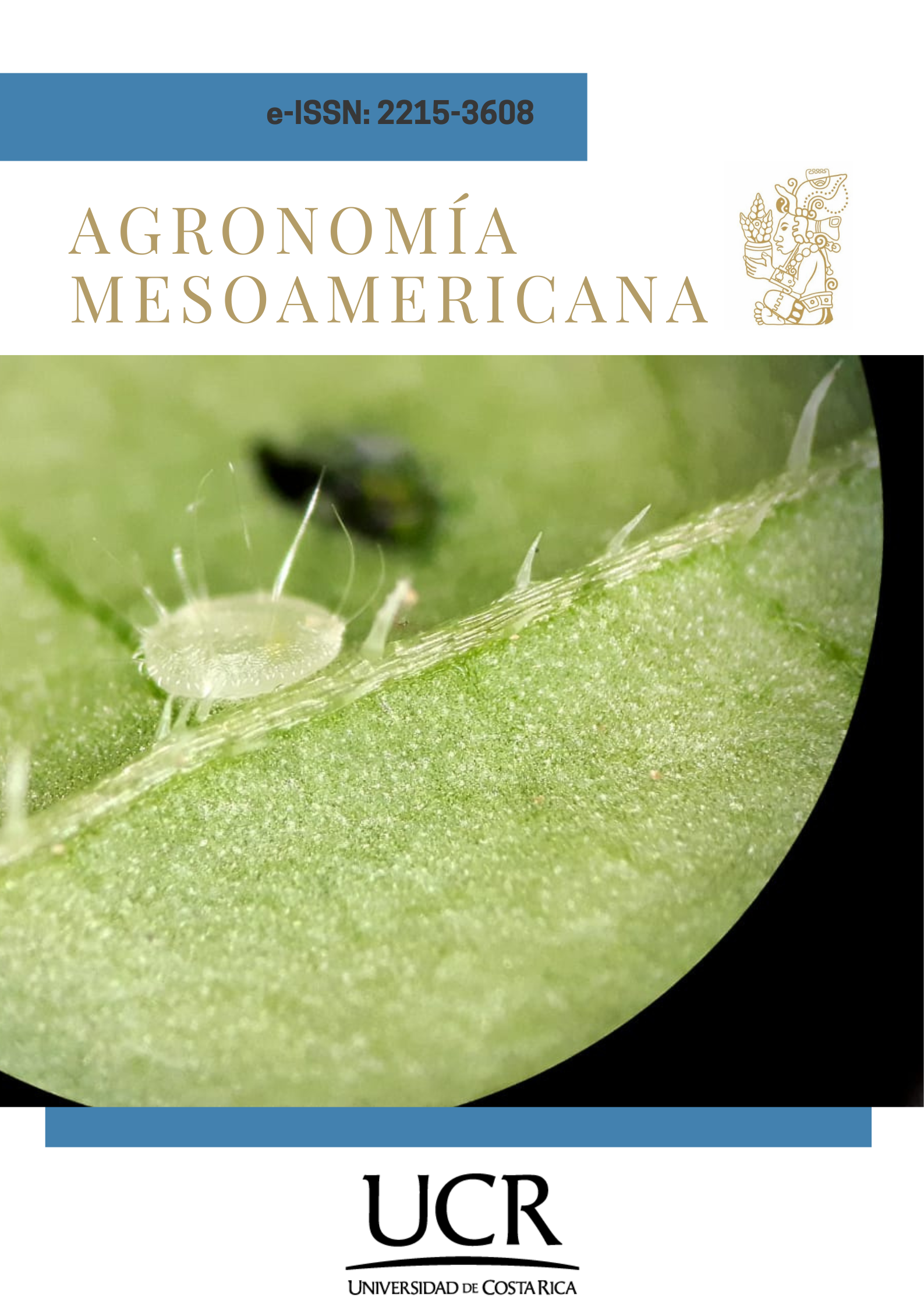
Downloads
Additional Files
Published
How to Cite
Issue
Section
License
Copyright (c) 2025 Pedro Fernando Silva-Illescas, Julio M. Arias-Reverón

This work is licensed under a Creative Commons Attribution-NonCommercial-NoDerivatives 4.0 International License.
1. Proposed policy for open access journals
Authors who publish in this journal accept the following conditions:
a. Authors retain the copyright and assign to the journal the right to the first publication, with the work registered under the attribution, non-commercial and no-derivative license from Creative Commons, which allows third parties to use what has been published as long as they mention the authorship of the work and upon first publication in this journal, the work may not be used for commercial purposes and the publications may not be used to remix, transform or create another work.
b. Authors may enter into additional independent contractual arrangements for the non-exclusive distribution of the version of the article published in this journal (e.g., including it in an institutional repository or publishing it in a book) provided that they clearly indicate that the work was first published in this journal.
c. Authors are permitted and encouraged to publish their work on the Internet (e.g. on institutional or personal pages) before and during the review and publication process, as it may lead to productive exchanges and faster and wider dissemination of published work (see The Effect of Open Access).

